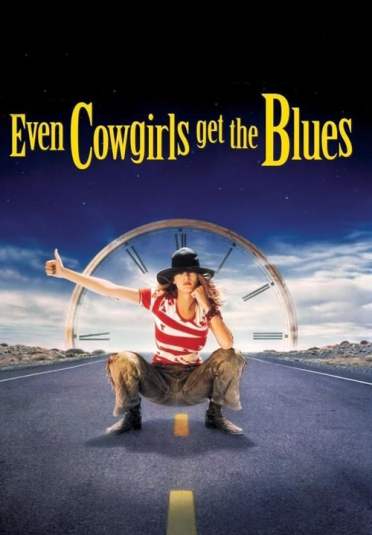Gus Van Sant’s 1993 film Even Cowgirls Get the Blues is the gay cult-classic film you’ve probably never seen and will probably find pretty weird, to say the least.
The film stars Kill Bill actress Uma Thurman, who plays Sissy Hankshaw, a girl who spends her time hitchhiking across the country with her unusually large thumbs (not a disability, but a “gift”). When she lands a job at a ranch run by an eccentric, cross-dressing male countess she meets a rough and tough group of lesbian cowgirls with a passion for the ranch and the whooping cranes who nest there.
The film is based off the 1976 novel of the same name by Tom Robbins, who narrates the 1993 film adaptation. The book is chock full of philosophical and thought-provoking quips. Dayna Troisi of The Millions (an arts review magazine) notes the movie’s “feel-good feminism” and describes how she fell in love with the book as a young teen exploring her sexuality and disability; but as she grew older, she realized it wasn’t as intersectional a novel as she thought it was. She explains that “It hinges on Sissy’s beauty, the man who ‘wins’ her in the end, and the ‘solving’ of her disability.” Regardless, she concludes that she still thinks the novel is problematic but beautiful.
The movie includes dozens of quotable monologues about female empowerment, drug use, patriarchy, and even body odour. It features a love affair between the main character and a cowgirl named Bonanza Jellybean, and ends with a standoff between the cowgirls and male police officers amid peyote-drugged whooping cranes.
The film was noted as a flop, doing no credit to the novel it was based on. Although, going into it with an open mind, I found it somewhat enjoyable. The movie is forward-thinking and full of female empowerment and sexuality, including lesbian romances that aren’t tailored to the male gaze. It is an overall goofy and fun film, with some serious messages in its undertone. It may be seen as an important film for women, especially those of the LGBTQ+ community in that it sees females occupying traditional male roles and dominating and outwitting men — free to be themselves.
While it may be more worth your while to read the book, I wouldn’t discourage anyone from watching this film, purely for the wild, confusing, and eccentric piece of cinema that it is. Just don’t forget to indulge in narratives written by actual queer and/or disabled folks while you’re at it.
Darien Johnsen is a UFV alumni who obtained her Bachelor of Arts degree with double extended minors in Global Development Studies and Sociology in 2020. She started writing for The Cascade in 2018, taking on the role of features editor shortly after.
She’s passionate about justice, sustainable development, and education.



